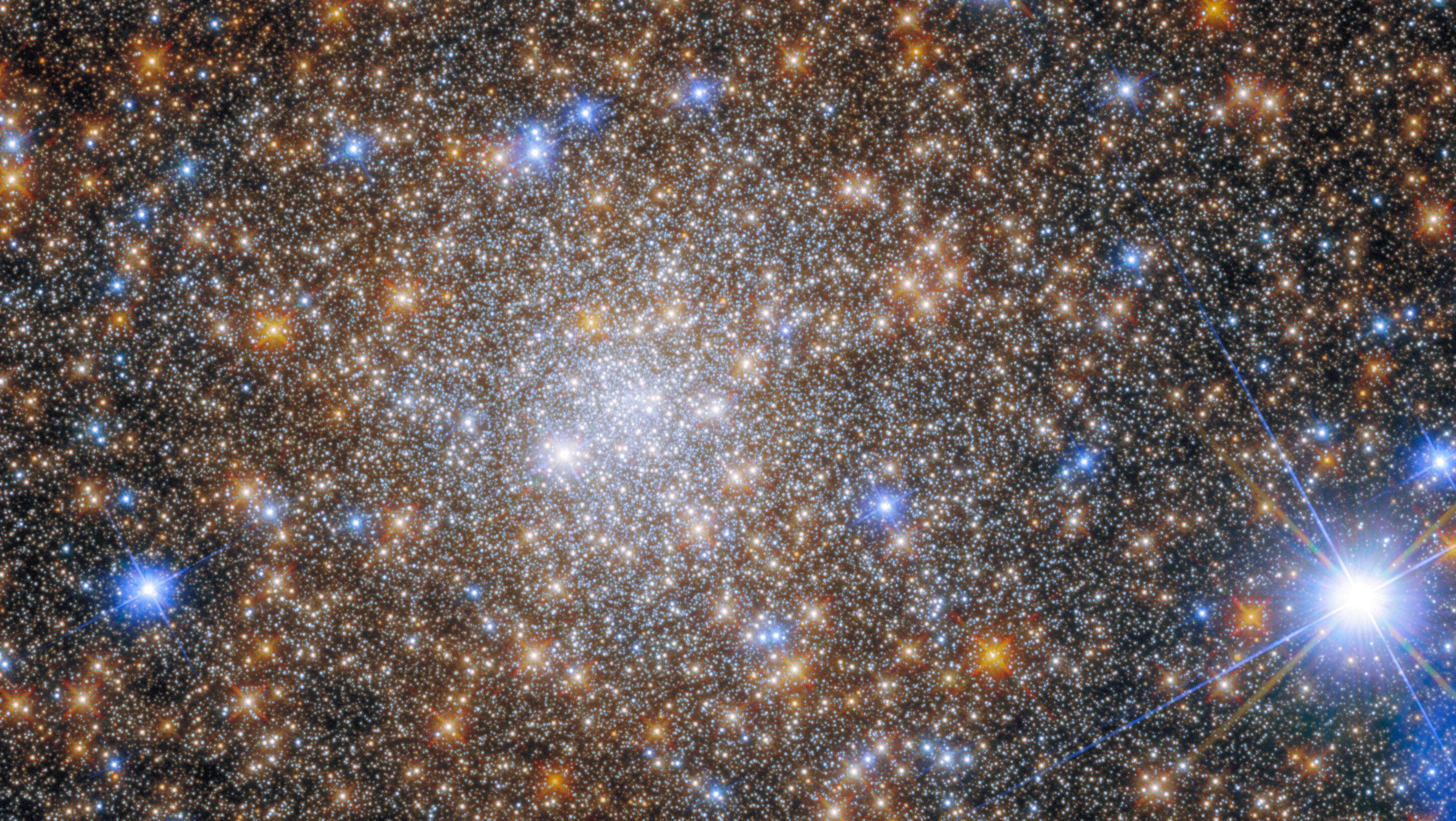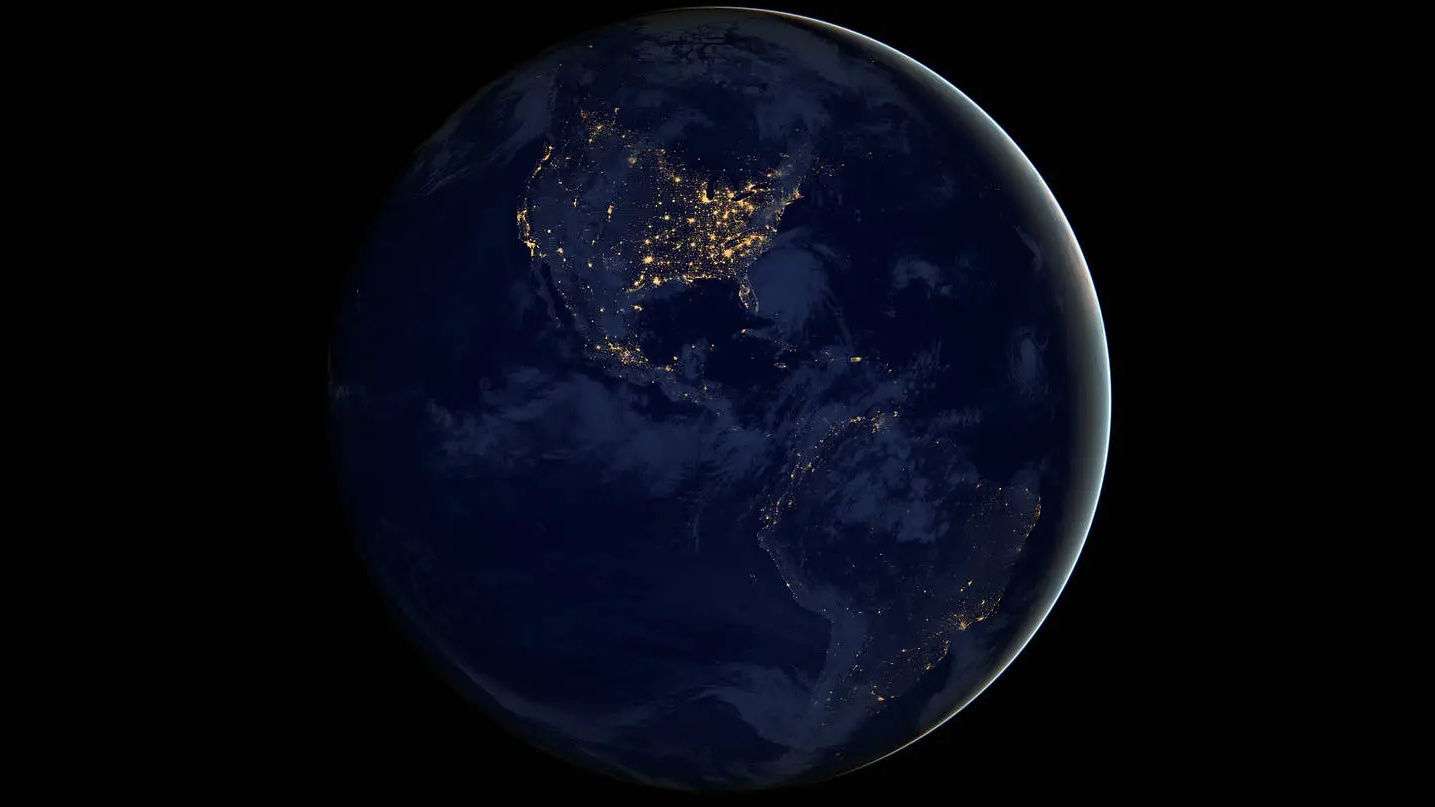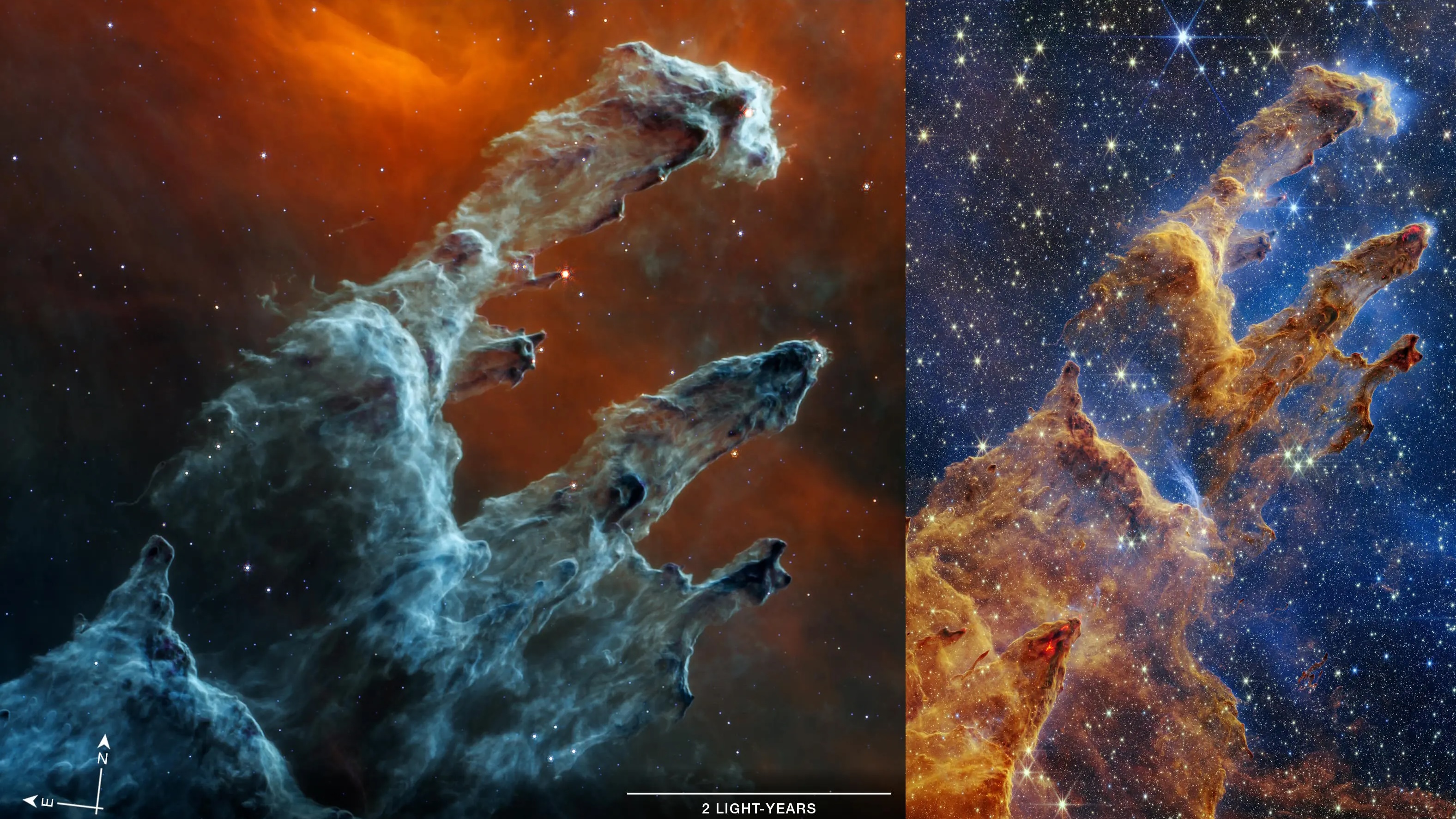The Uncensored Guide To ‘Oumuamua, Aliens, And That Harvard Astronomer
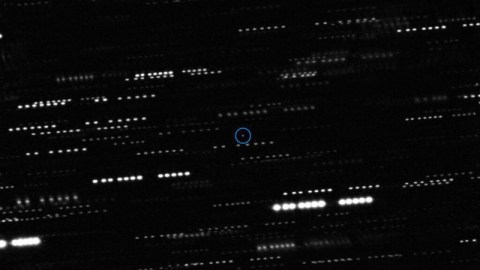
Avi Loeb says it’s aliens. Every other astronomer disagrees. Here’s why.
In 2017, an astronomical event occurred that was unlike any other: for the first time, we observed an object that we are certain originated from beyond our Solar System. Initially, its origin was a hot topic of contention. Was it a comet, albeit one with an unusual orbit? Was it an asteroid, on account of the fact that it didn’t develop a notable tail? Or was it something entirely unique: a visitor from elsewhere in the galaxy, and the first example of an entirely new class of object? Named ‘Oumuamua — Hawaiian for “messenger from the distant past” — it became a spectacular discovery, and a window into what objects exist throughout interstellar space.
But one scientist, enamored with his own hypothesis and ignoring the large amounts of research done by other professionals who specialize in this particular field, has embarked on a public crusade to convince the world of the most far-fetched explanation for this natural phenomenon: aliens. For the better part of the past four years, Harvard astronomer Avi Loeb has appeared all over the media to gather public support for an idea that absolutely defies the scientific evidence. Contrary to the narratives you’ll find elsewhere, including in Loeb’s new book, Extraterrestrial: The First Sign of Life Beyond Earth, this is not a possibility worth taking seriously as a scientist. A straightforward look at the evidence shows us why.
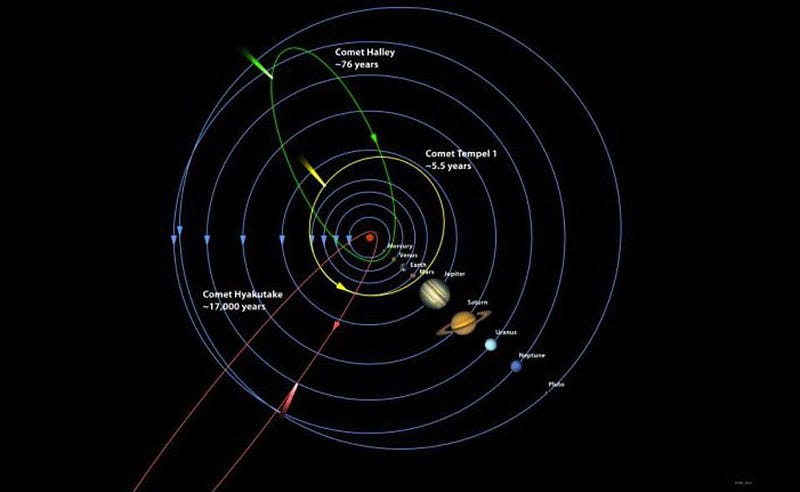
According to the law of gravity, every object that’s gravitationally influenced by the Sun will take one of four orbital paths:
- circular, with an eccentricity of 0,
- elliptical, with an eccentricity greater than 0 but less than 1,
- parabolic, with an eccentricity exactly equal to 1,
- or hyperbolic, with an eccentricity greater than 1.
Before 2017, we had seen a few objects with eccentricities that were 1 or greater, but only by a tiny amount: values like 1.0001 or so. Even with a kick from Jupiter, the fastest-moving Solar System object ever seen only reached an eccentricity of 1.06. This corresponds to an object escaping the Sun’s gravity, but only by a tiny amount. By the time an object like this makes it to interstellar space, it will only have a speed of ~1 km/s or less.
But for ‘Oumuamua, it was an entirely different story. It immediately became clear that this object was something special, as its eccentricity was about 1.2, corresponding to an escape speed that was more like 26 km/s. It was the fastest-moving naturally occurring object to leave the Solar System with such a speed, a phenomenon that would be impossible from even an ideal gravitational interaction with a planet like Jupiter or Neptune, which weren’t in the path of ‘Oumuamua at any point. Clearly, it must have originated from outside of our neighborhood.
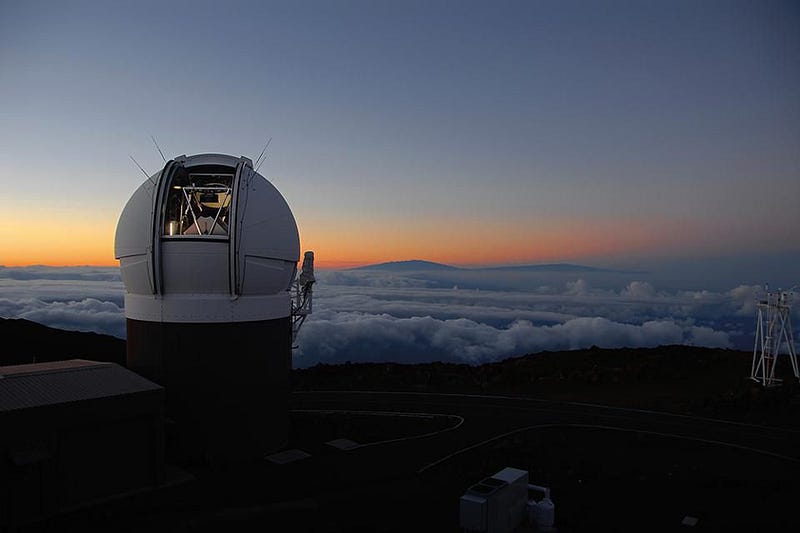
Theoretically, this lines up with a population of objects we’ve long expected to be there, but hadn’t found until now: the analogue of asteroids, comets, Kuiper belt objects, and Oort cloud objects from other solar systems. We’ve long known that objects like this routinely get ejected from our own cosmic backyard, and likely have for billions of years, dating all the way back to the formation of the Sun and the planets. We’ve witnessed other solar systems forming similarly, and we’ve fully anticipated that there ought to be millions or even billions of these objects for every star in our galaxy.
According to simulations and calculations, many of these objects should pass through our Solar System on an annual basis, but we wouldn’t be able to identify them unless we started taking regular, almost nightly pictures of the entire sky to great sensitivity, over and over again. That’s exactly what the Pan-STARRS telescope (above) — the precursor to the Vera Rubin Observatory — has been doing for years now, and it was that very telescope that discovered ‘Oumuamua. It marks the first detection of an interstellar interloper, and that’s the designation that scientists eventually settled on when it came to classifying this object.
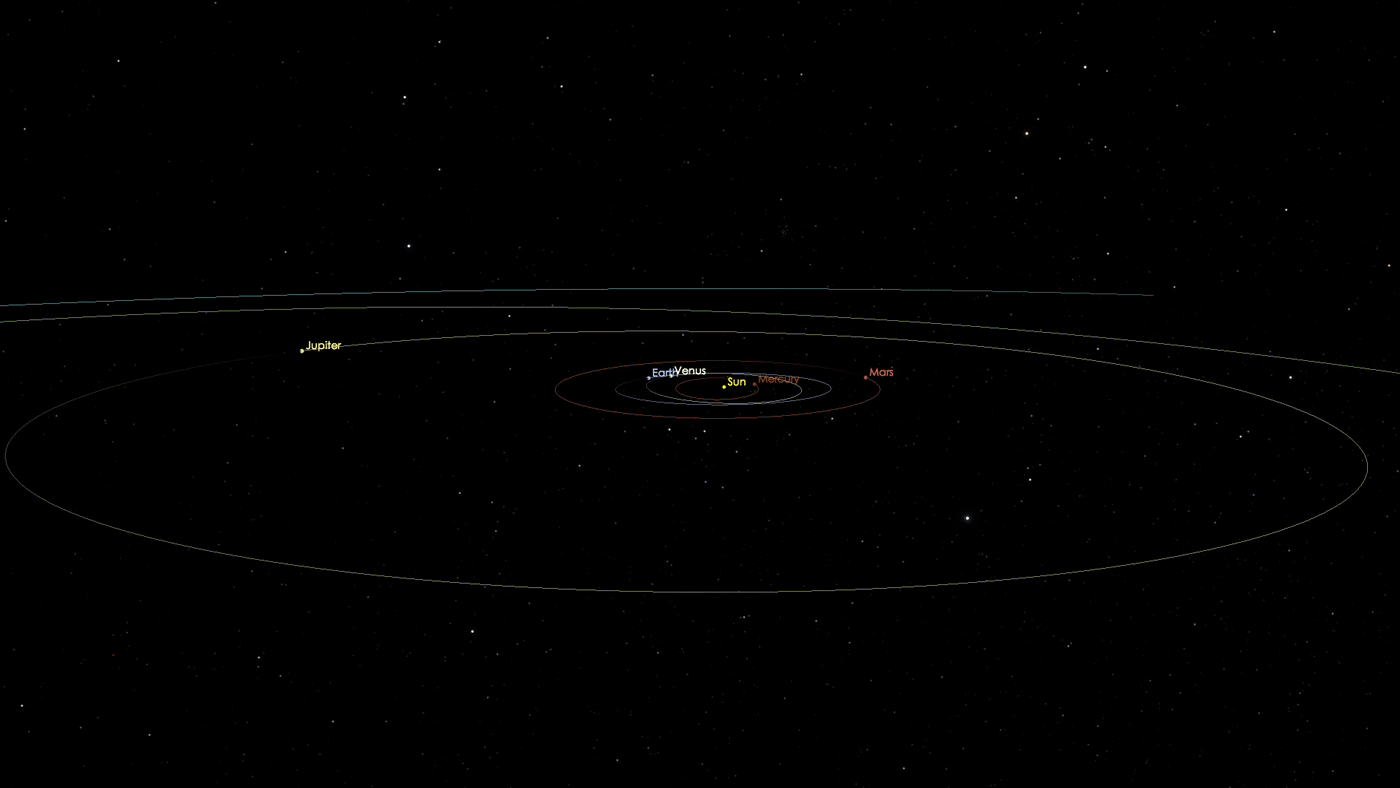
Of course, the only reason we found this one is that it managed to get so close to the Sun, a rare occurrence for objects such as this. It actually passed interior to Mercury’s orbit: where our telescopes rarely scan, because you never want to run the risk of accidentally pointing your telescope at the Sun. We didn’t actually discover it until it had crossed over to the other side of Earth’s orbit, when it was on its way out of the Solar System. We found it when it was near its closest to Earth: 23,000,000 kilometers away.
When it made its closest approach to the Sun, it was moving incredibly fast: up to 88 km/s, or three times the speed that Earth orbits the Sun. But we were lucky to image it at all. It was small (only about 100 meters long), faint, and very red in color, similar to the Trojan asteroids we see in orbit around Jupiter. Its color is different from the icy bodies we know of, failing to match up with comets, Kuiper belt objects, or even centaurs, and follow-up observations revealed a certain amount of boring-ness to ‘Oumuamua, as it displayed no molecular or atomic absorption or emission features. In fact, if it weren’t for two odd features about this object, there would have been very little to note about it, other than the fact that it exists and has the trajectory we observed.
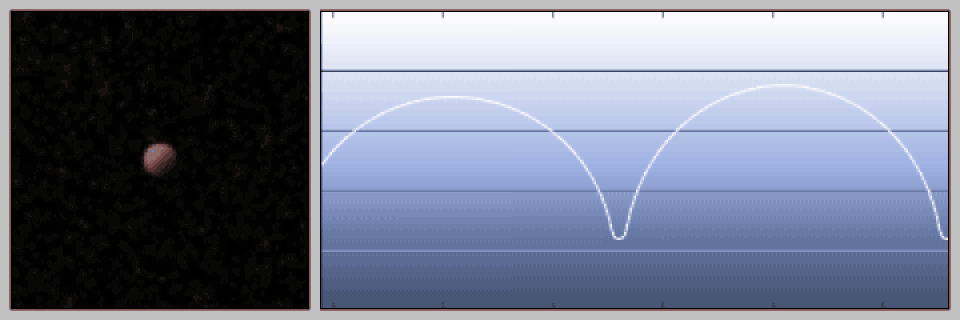
The first odd feature about ‘Oumuamua was noticed in October of 2017, shortly following its discovery. Because it was relatively close to Earth but also moving away very quickly, we only had a short window of time to do follow-up observations, and a series of telescopes set their sites on this interstellar oddity. Over a timescale of about 3.6 hours — but not periodically like clockwork — the object varied in brightness by about a factor of 15. Objects like comets or asteroids might vary by a few percent, or even a factor of 2, but a factor of 15 is unheard of. The leading explanation from models of this object is that it must be both elongated and tumbling, which would explain its regular, severe brightness variations.
The reason this is such a good explanation is that unless there’s some mechanism for obscuring the light from this object on one side, like an interstellar analogue of Saturn’s two-toned moon Iapetus, or perhaps dust or outgassing, a change in the object’s apparent size could explain the large brightness variations. It’s not a surprise that this object would be tumbling, but seeing an object so thoroughly elongated, like a rock that’s spent a very long time being weathered in a river or ocean, makes this object all the more interesting.
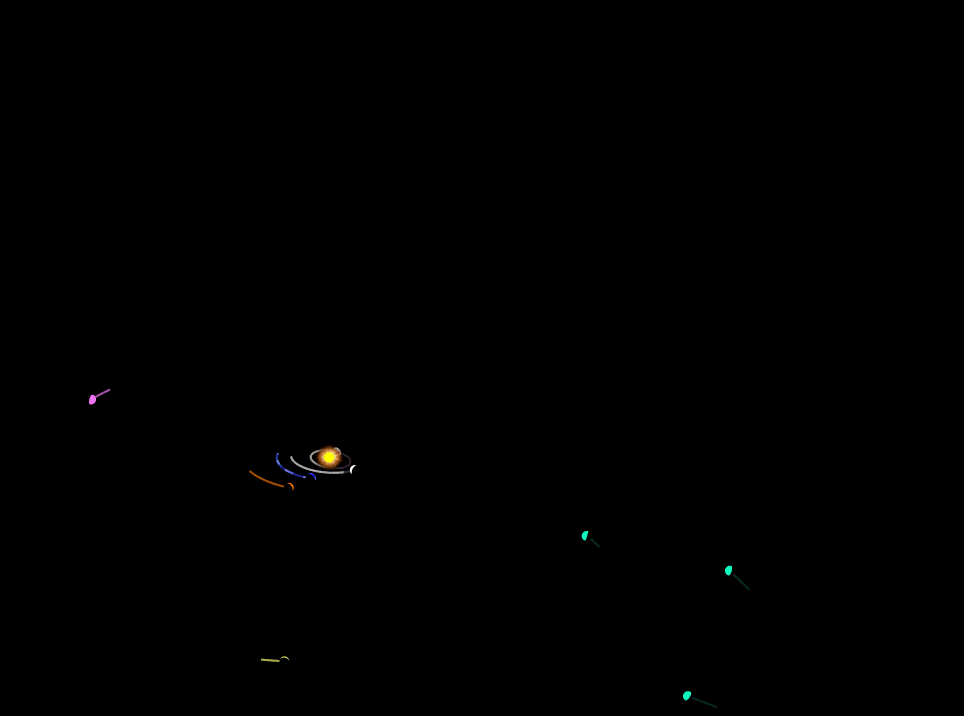
The second odd feature came when we tracked ‘Oumuamua’s path out of the solar system. What we expected, perhaps naïvely, is that it would follow a hyperbolic orbit, as though the only force acting on it would be gravitational. What we found, however, was that a normal, perfectly hyperbolic orbit didn’t quite fit what we observed. It was as though there was an additional acceleration, as though something unobserved were pushing it, in addition to the influence of gravity.
There are many reasons, of course, that an additional acceleration could occur. We’ve seen spacecrafts accelerate in exactly this fashion when they heat unevenly, and an asymmetric, rotating body fits that profile very well. Additionally, there could have been some form of outgassing coming from ‘Oumuamua; the only feature we could even test for was a coma, which it lacked, but that only rules out an icy nature. Given its small size and great distance, we concluded it didn’t have a halo of gas around it, but could say nothing about whether it had a diffuse jet of ejecta coming off of it: an eminent possibility.
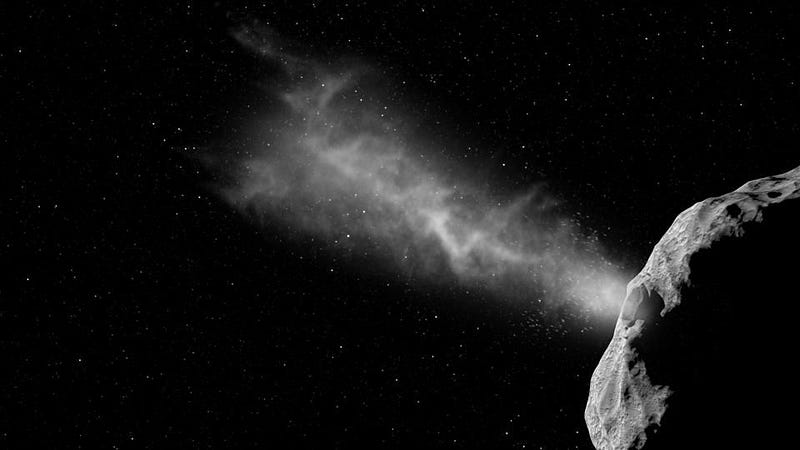
Since the discovery of ‘Oumuamua, there have been many papers written about it by the astrophysics community, bringing together the lessons we learned from it, synthesizing our pre-existing theories with the new observations to create a holistic picture of what might be lurking in interstellar space. An individual object like ‘Oumuamua will only pass so close to a star in the Milky Way once every ~100 trillion (10¹⁴) years, or about 10,000 times the present age of the Universe.
How did we get so lucky, then, as to see it?
It’s because of the sheer number of them. There may be, according to some estimates, as many as ~10²⁵ objects like this — interstellar interlopers — that are flying through our galaxy. Every so often, given the incredible number of these objects out there, they’ll pass through our Solar System, up to a few times per year. If we have the right tools, scanning the sky often enough, comprehensively enough, pollution-free enough, and to faint enough magnitudes, we’ll get to observe them. Many speculated that ‘Oumuamua would be a one-off; as astronomer Gregory Laughlin quipped, “this was the time of ‘Oumuamua’s life.” But just two years later, we found a second interstellar interloper: the very comet-like object, Borisov.
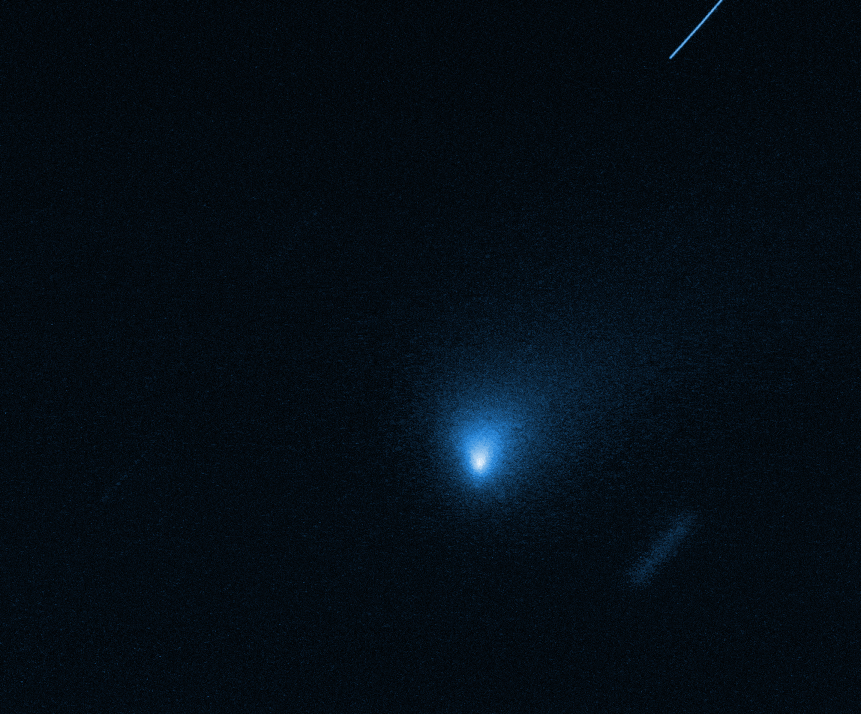
Borisov, in August of 2019, became the second example of a significant object whose origin is beyond our Solar System, but it was very different from ‘Oumuamua. Comparing the two, we find that Borisov was:
- extremely eccentric, with an eccentricity of 3.35, nearly triple any other object,
- very large, with a diameter of about 6 kilometers, versus 0.1–0.3 km for ‘Oumuamua,
- and distinctly comet-like, with a clear coma and a long tail, rich in cynaide and diatomic carbon gases.
Borisov, unlike ‘Oumuamua, has an appearance that was familiar to us. So why, then, were these two objects so different from one another?
We have to recognize that there could be many answers to that question. Perhaps they’re not that different, but ‘Oumuamua was too small to measure in detail with the instruments we had in 2017. We discovered Borisov when it was on its way into the Solar System, giving us plenty of time to study it, but only saw ‘Oumuamua when it was already on its way out. Perhaps they are different, because there are many populations of these objects out there: some are planetesimals, others are rocky and ice-free, some have been weathered by a journey of billions of years in interstellar space, etc. The way to answer a question like this is to build better instruments, collect more and superior data, increase our sample size, and actually begin studying these interstellar objects in detail whenever they happen to pass close enough to be observed.

As you can see, there’s a rich scientific tapestry that the astronomical community is weaving about these new classes of objects. We expect the interstellar medium to be filled with remnants and ejecta from the hundreds of billions of solar systems throughout the Milky Way, and owing to the recent advances in our technology, we’ve finally started to detect them. We only have two such objects so far, but the coming years — assuming that mega-constellations of satellites don’t ruin our view — should help us better understand and classify these objects.
That is, unless we decide to take the fundamentally unscientific approach of Avi Loeb, and insist on considering an alien origin for the first of these objects.
Loeb, who’s been intimately involved with the Breakthrough Starshot project, has written papers with his postdocs and students insisting that ‘Oumuamua is just as likely to be an alien spacecraft (that looks suspiciously like a light-sail) as it is to be one of the expected ~10²⁵ naturally occurring objects in our own galaxy. Despite the fact that the spectral signatures of the object — its color, reflectivity, size, etc. — are consistent with a natural origin, Loeb offers only loud, immodest speculation about aliens and diatribes about community groupthink. Coupled with inadequate data, which is the only data we have, he’s impossible to prove wrong.
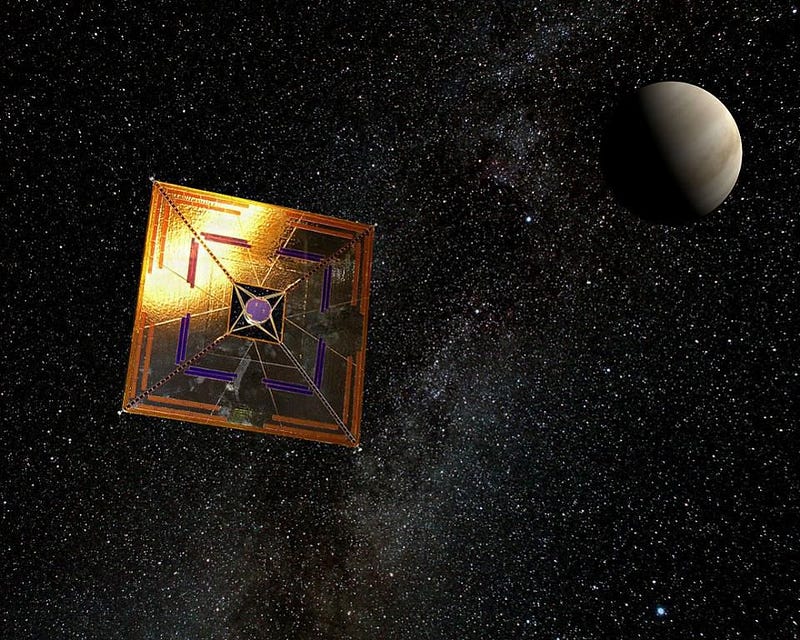
What is a responsible scientist to do in this situation? There are literally hundreds of astronomers who work in this field, and Loeb continues to ignore all of them — their work, their data, their conclusions, and the full suite of evidence at hand — instead focusing on his own idea which has no convincing data to back it up. He claims that he didn’t court this public attention, but my own inbox shows that to be a lie. Prior to 2017, I had received 0 emails from Avi Loeb; since 2018, I have received 74 from him and even more from his students. All of them have been unsolicited; nearly all of them advertise his viewpoints about extraterrestrials, including the bizarre claim that astronomers are somehow resistant to considering the possibility of aliens. Given that planetary scientists are looking for life elsewhere in our Solar System, astronomers are searching for biosignatures on exoplanets and in interstellar materials, and that SETI continues to seek technosignatures, it’s a claim that’s countered by an enormous suite of evidence.
Loeb was a once-respected scientist who made important contributions to astrophysics and cosmology, particularly when it came to black holes and the first stars. But his work on extraterrestrial signatures continues to be largely unappreciated by the community — a position as justifiable as ignoring the comparable idea of Russell’s teapot — and rather than address their scientific objections, he’s stopped listening to other astronomers entirely, instead choosing to try his scientific case in the most unscientific place imaginable: the court of public opinion. Loeb, like everyone, has the freedom to choose which hill his career and reputation will die on. While the possibility of aliens will certainly attract a large amount of public attention, these extraordinary claims that lack even modest supporting evidence will continue, deservedly so, to remain far out of the scientific mainstream.
Starts With A Bang is written by Ethan Siegel, Ph.D., author of Beyond The Galaxy, and Treknology: The Science of Star Trek from Tricorders to Warp Drive.


